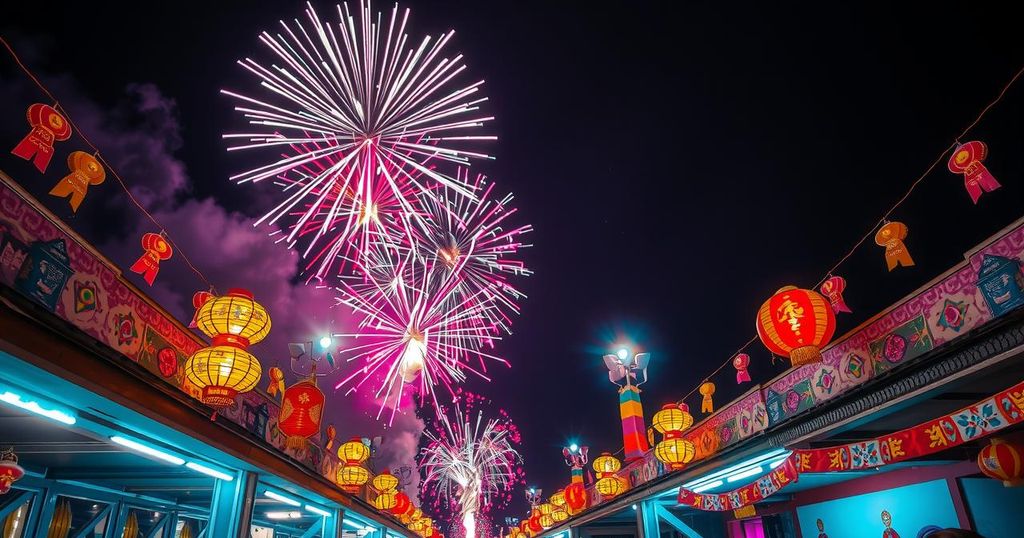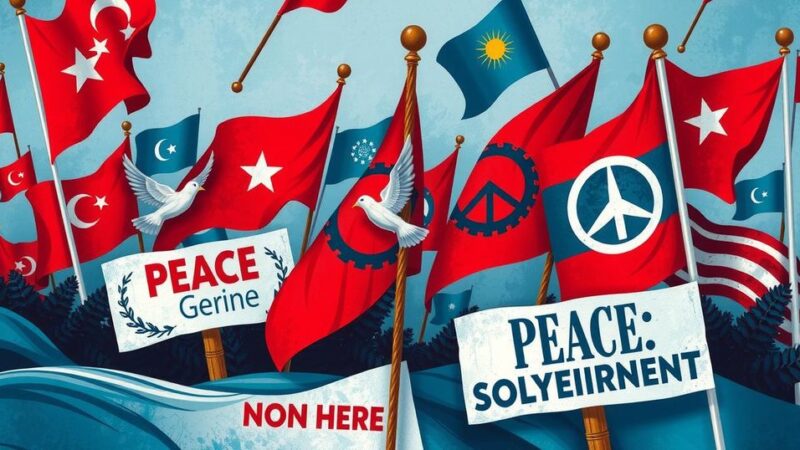As Iran’s Fire Festival approached, rebellious youth engaged in widespread protests against the regime, conducting numerous operations targeting symbols of repression. Key actions involved setting fire to IRGC bases and government billboards. The festival became a platform for defiance despite regime crackdowns. The ongoing acts symbolize a growing movement for democratic change amidst oppressive governance.
As the Fire Festival (Chaharshanbe Suri) approached, Iran saw a surge in anti-regime protests led by rebellious youth opposing the ruling dictatorship. In the days surrounding the festival, these youths engaged in widespread actions across multiple cities to target symbols of repression. Their activities were characterized by defiance and determination to dismantle mechanisms of oppression in the regime.
On March 17, youth conducted 20 operations in 15 cities, executing over 100 actions aimed at suppressing regime symbols. Demonstrators rallied with chants such as “The only answer to the mullahs is fire, let the flames rise,” expressing their resistance against oppressive forces. Key actions included:
– Burning various IRGC Basij bases in cities including Tehran and Mashhad.
– Setting fire to government billboards featuring images of leaders Kawla Khamenei and Ruhollah Khomeini.
– Attacking headquarters related to regime control, exemplifying their determination to disrupt suppression efforts.
The celebrations associated with the Fire Festival, observed on the last Tuesday of the Persian calendar, turned into a significant act of defiance. Institutions like security forces normally stifle public participation with extreme measures. However, crowds took to the streets with fervent chants against the regime, illustrating their collective defiance and unity in resisting oppression.
In Bandar Anzali, demonstrators shouted slogans against the regime. Several cities along the Iranian landscape witnessed burning of images depicting Khamenei and Khomeini. Protesters, like one individual from Karaj, made statements against oppression, commemorating martyrs while burning regime banners, demonstrating a powerful dissent deeply rooted in their cultural practices.
In response, the Iranian regime tightened security in anticipation of rising dissent. Judicial authorities implemented countermeasures to suppress opposition during the Fire Festival and following the Nowruz holidays. Gholamreza Rezaeian, commander of state security forces intelligence, candidly reflected on the regime’s fears, indicating the potential escalation of resistance.
The events surrounding Chaharshanbe Suri underline a broader momentum for change within Iran. The actions of rebellious youth signify a collective struggle against oppressive governance and a commitment to democracy. As revolutionary activities spread, a clear trajectory emerges, igniting hope and inspiring a movement for freedom among Iranians.
This festival embodies the ongoing call for democracy and justice, revealing that the resistance against oppression stands fervently alive, reinforcing the aspiration for a liberated future in Iran.
The series of protests and acts of defiance during the Fire Festival in Iran highlights the rebellious spirit of the youth against the regime. Despite heightened security and crackdowns by authorities, the demonstrators showed unwavering commitment to challenge oppression, paving the way for a vision of democratic change. As these movements gain momentum, they signify a potential shift towards a future where justice and freedom may prevail.
Original Source: irannewsupdate.com






